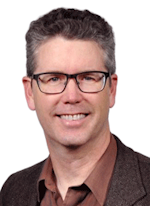Optical component startup Quantum Electro Opto Systems Sdn. Bhd. (QEOS) has unveiled the first products based on its Tilted Charge Dynamics technology. The technology promises to support multi-gigabit transmission rates over short distances more economically and with less power consumption than conventional approaches, the company asserts.
Tilted Charge Dynamics enables such optical transmission functions as the laser, power driver, lens, and other elements to be embedded in a single chip, the company says. The technology is based on the work of Prof. Nick Holonyak and Prof. Milton Feng from the University of Illinois Urbana Champaign, who developed the first optical tilted charge device using a design based on a high-speed Heterojunction Bipolar Transistor. According to the QEOS website:
“An optical tilted charge device consist [sic] of an active region with built-in free majority carriers of one polarity, where on one input to this active region, only one species of minority carriers of another polarity are injected and allowed to diffuse across this active region. This active region consists of features that enable and enhance the conduction of majority carrier and the radiative recombination of minority carriers. On the output side of the region, minority carriers are then collected, drained, depleted or recombined by a separate and faster mechanism. Electrical contacts are coupled to this full-featured region.”
The technology enables the company to develop products of lower total power consumption, smaller size, and lower cost compared to traditional multi-gigabit short distance optical transmission products. “It’s incredible to realize this technology features the world’s fastest LED; it’s 10 times faster than the traditional LEDs in the market,” said Dr. Gabriel Walter, CEO at QEOS, via a press release. “And the products we’re introducing are a fraction of the size, power, and cost of traditional laser-based products with the comparable functionality. With the transistor structure, various new integrated optical and electronic functions can be realized that are not possible with the existing optical technology.”
The first products based on the technology are dubbed the QEOS Optical Transceiver Kit. The kit includes the QEOS Transmitter Optical Full Assembly (TOFA), which pairs with the QEOS Receiver Optical Full Assembly (ROFA) to support 3.5-Gbps transmissions to 100 m. The kit will be available for sampling “soon,” the company promises. A higher-speed TOFA, operating up to 6.5 GHz for 10-Gbps applications, will be available later this year, QEOS adds.
QEOS envisions its TOFAs and ROFAs as building blocks for lower cost, lower power active optical cables, computer interconnects, board-to-board interconnects, and in power-sensitive portable applications.
“This technology can be used to support a range of transmission interfaces such as USB, HDMI, Ethernet, Thunderbolt, InfiniBand, and also communications within portable devices,” said Raymond Chin, chairman of QEOS, in the same release. “Our lower power consumption and lower cost products open up the market for new and expanded use of optical communications in data centers, and for industrial, commercial, and residential optical connectivity.”
For more information on optical components and suppliers, visit the Lightwave Buyer’s Guide.
